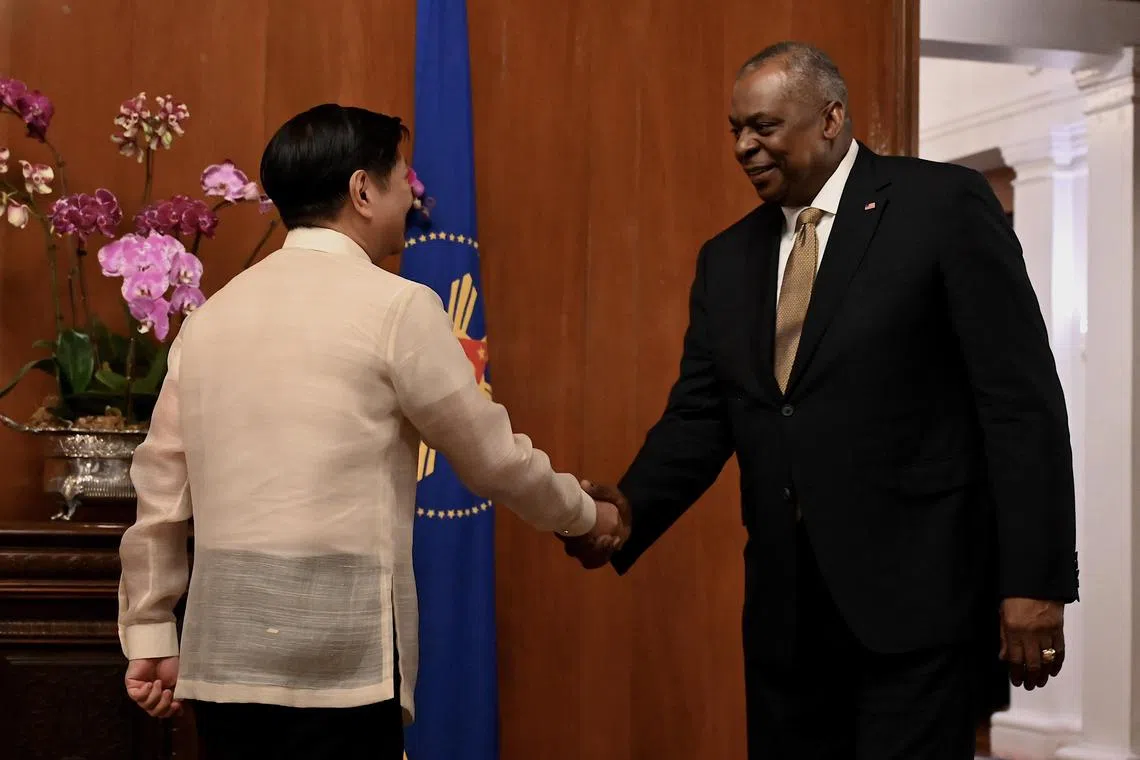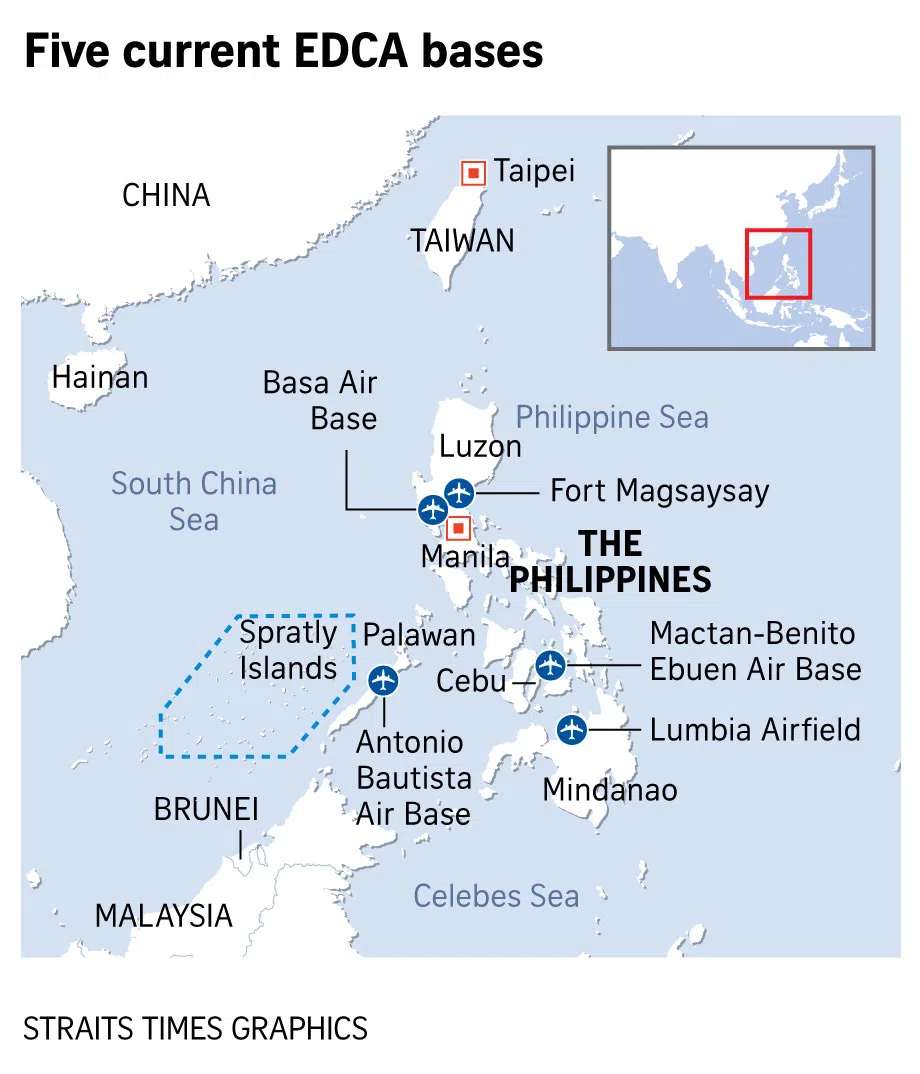Why Marcos is inviting the US military back to the Philippines
Sign up now: Get insights on Asia's fast-moving developments

Philippine President Ferdinand Marcos Jr (left) welcoming US Defence Secretary Lloyd Austin in Manila on Feb 2, 2023.
PHOTO: EPA-EFE
Follow topic:
MANILA – Former Philippine president Rodrigo Duterte made a habit of casting doubt on the future of his country’s longstanding defence ties with the United States, usually in response to US concerns about his deadly drug war.
Now, with new presidents in both countries, the tide has turned.
The two allies have paved the way for greater American presence in the Asia-Pacific region, spurred by persistent tensions with China over Taiwan and the South China Sea.
What’s the new agreement?
An expansion of the Enhanced Defence Cooperation Agreement, originally signed in 2014, was announced on Thursday,
Three Philippine bases near Taiwan – two in the northern province of Cagayan and one in Isabela province – in addition to one in Palawan near the South China Sea, are among the new sites said to be under consideration.
The two sides also decided to substantially complete projects at the five existing military sites, including another base in Palawan province, near the disputed sea. The US has allocated over US$82 million (S$108 million) towards infrastructure investments in the five sites.
What’s the impetus?
US President Joe Biden has sought to readjust the presence of US forces in the Indo-Pacific region and restore the relationship with the Philippines since President Ferdinand Marcos Jr took office in 2022.
While China was not specifically mentioned in announcing the new agreement, both countries are worried about Beijing’s increasingly assertive claims
Chinese ships have regularly been seen trailing Philippine fishing vessels, often intercepting them and forcing them to divert from contested areas.
Mr Marcos raised the issues during his meeting with Chinese President Xi Jinping
Mr Biden has also stepped up US assurances to defend Taiwan.
The US confirmed in January that it would be moving thousands of Marines based in Japan to a reactivated facility in Guam, a move also seen as part of a wider effort to disperse American forces to help it better confront China in the event of a crisis.

What other defence agreements are there?
There are two other defence agreements.
The Mutual Defence Treaty (MDT) was signed in 1951, five years after the US granted the Philippines independence, and it has been at the centre of defence relations ever since. The eight-article pact – one of seven collective defence treaties the US has globally – calls for each side to help build defence capabilities and “meet the common dangers in accordance with its constitutional processes” if either side is attacked.
The Visiting Forces Agreement (VFA), signed in 1998, spells out the legalities for US military personnel operating in the Philippines.
It covers everything from passport regulations to procedures for importing military equipment to criminal jurisdiction.
What were Mr Duterte’s complaints?
Mr Duterte came into office in 2016 pledging to pivot Philippine foreign policy towards China and away from the US, its former colonial master.
Mr Duterte, whose term ended in 2022, questioned whether the US would defend the Philippines if China seized disputed shoals and reefs in the South China Sea – scepticism that has persisted for decades.
A US diplomatic cable from 1976, since declassified, states that the MDT does not cover disputed areas such as the Spratly Islands, although American officials have recently committed to defend the Philippines in disputed waters.
Mr Duterte also said military deals with the US have not helped to address security threats in the Philippines, particularly the communist insurgency.
He threatened to terminate the VFA
As his term wound down, promises of big-ticket projects and billions of dollars in investments from China were largely unfulfilled. Tensions over the South China Sea have flared again and oil exploration plans have stalled.
In 2023, the International Criminal Court said it would resume its investigation into Mr Duterte’s war on drugs.
What’s the history behind the relationship?
The Philippines has periodically reassessed its relationship with the US, which ruled the South-east Asian nation as a territory for nearly 50 years after it was ceded by Spain.
After World War II, Clark Air Base and Subic Bay Naval Base, near Manila, were the largest US military outpost in the Western Pacific.
The 1947 Military Bases Agreement, originally a 99-year deal, was revised several times to give the Philippines more compensation or sovereignty.
An amendment was added that allowed for it to end in 1991. As the deadline approached, leaders from both countries sought to extend the pact.
Yet an upswell of anti-colonial sentiment prompted the Philippine Senate to reject a fresh agreement, and the US closed all of its bases by 1992. BLOOMBERG

